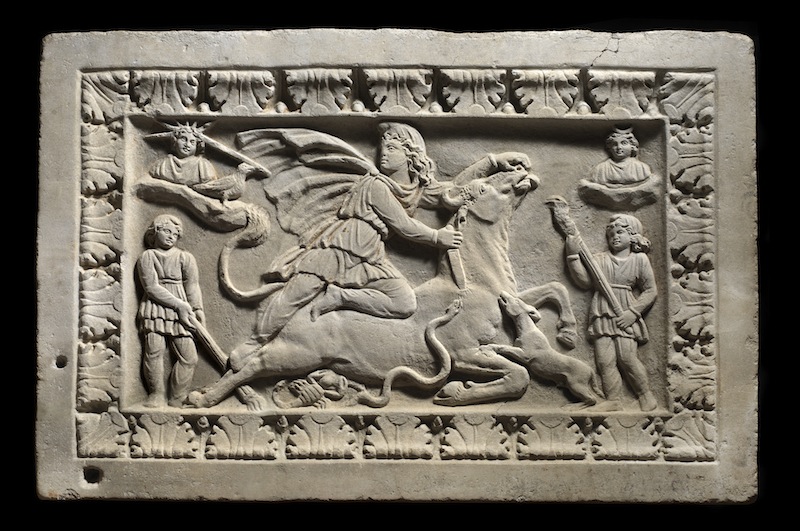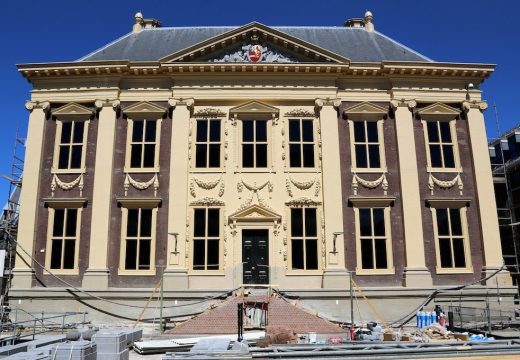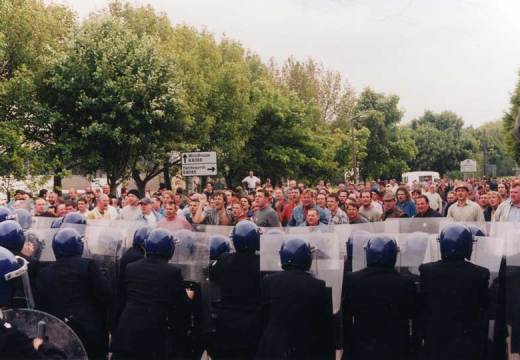As London’s fair scene matures, among the most talked about figures is the cross-collector, who brings together pieces from different periods and disciplines. Masterpiece London has specifically targeted them in its five years of existence. ‘The fair was born out of the ethos of cross-collecting,’ says Nazy Vassegh, chief executive of the fair. ‘I set up Sotheby’s Preferred [the auction house’s membership and benefits scheme], and that was all about cross-collecting. In my experience of working with private clients, people are interested in different art forms and they don’t limit their collecting to one category. Some of the most dynamic and extraordinary collectors I have worked with most definitely like to juxtapose the old with the new.’
Indeed, Masterpiece, open for business from 26 June to 2 July in the South Grounds of the Royal Hospital Chelsea, is designed to encourage encounters with unfamiliar material for collectors, whether they are seasoned connoisseurs or just beginning their journeys. So instead of ‘zoning’ the layout, as many fairs do, so that you meet clusters of Old Masters or modern design pieces together, dealers of very different material are shown next to each other.
Philip Hewat-Jaboor, the art advisor and curator who is chairman of Masterpiece, relishes its unique, and what he describes as ‘serendipitous’ quality. ‘With the clever way that we arrange the fair, you have this marvellous opportunity to come across all sorts of diverse works of art. And to have in London for one week, at the height of the season, 160 dealers from all over the world showing the best of what they have, is phenomenal. It would take you years to go and see this stuff elsewhere, if you were wanting to do so.’ European newcomers contributing to the mix this year include Italian dealers specialising in Old Master paintings, such as Bologna’s Bottegantica and Caiati & Gallo from Milan. Among those from New York making their first appearance are leading Chinese porcelain experts Fitzgerald Fine Arts and American art specialists Hirschl & Adler Galleries.
Click here to buy the June issue of Apollo
Part of the reason for organising the fair in this way is to provide a balance, of the kind traditionally found in Mayfair but now largely disappeared. ‘If you’re a buyer of works of art and not a focused collector,’ says Hewat-Jaboor, ‘you can no longer look around Bond Street and Mount Street and see works of art in shop windows. There’s no exposure anymore to this whole world that we are so passionate about.’
The care taken to establish this balance serves a number of purposes. ‘Apart from giving the opportunity to have one’s eyes opened to new things, the variety of the stands – from paintings on one to three-dimensional things on another, and then jewellery in cases – keeps you alert,’ he states. ‘The fair is quite big – and we’re not going to get any bigger, I think it’s the ideal size – but you can walk around it and not get that terrible fatigue one finds at other fairs, that hits one like a sledgehammer.’
When Masterpiece started, ‘the fair market was getting very tired’, Hewat-Jaboor suggests. ‘Nothing had changed. There had been attempts to refresh some of the fairs by bolting on contemporary things. We wanted to really reinvigorate the market, particularly in the traditional fields, and to incorporate that with a new look at contemporary design, sculpture, painting and so on, and to combine all this in a really fresh and exciting way. Not in an overwhelming way, but just to present these things slightly differently.’
To this end, last year the fair featured a contemporary sculpture walk in the grounds of the Royal Hospital, which include Ranelagh Gardens – the old 18th-century pleasure gardens now the site of Chelsea Flower Show. This time an exhibition of Phillip King’s large-scale outdoor works are on display in association with Thomas Dane Gallery, marking the British sculptor’s 80th birthday (until 29 August).
There is a philanthropic strand to Masterpiece, too. In 2012, the Wallace Collection held a symposium at the fair, and Masterpiece in turn raised money for the museum by hosting a Curators’ Dinner, with funds raised going towards the conservation of Jordaens’ Allegory of Fruitfulness of 1620–29. The restored painting was unveiled the following autumn in the Wallace Collection’s newly refurbished East Drawing Room. As
the fair grows it is reaching across into the museum world, forging links with academics and curators. This year it has announced cultural partnerships with both Sir John Soane’s Museum and the Courtauld, with several events in the pipeline (the final programme was still to be announced at the time of writing). Both institutions are an inspired and apt choice of partner: notably, their collections were assembled by a single individual, with an eye for fine things.
Click here to buy the June Apollo
Vassegh, who joined as CEO last year, acknowledges Masterpiece’s reputation as one of the more glamorous events on the calendar, but insists that this shouldn’t define the fair. She states that the organisers have ‘worked hard on the presentation of the fair in terms
of the art, antiques and design’, as it had been ‘suffering a little bit from people perhaps confusing it as a homes and luxury fair’. She describes the event as ‘truly multi-category, covering 3,500 years’ worth of the history of art, from antiquities right through to contemporary’. As such it is perfectly timed for the summer season, sandwiched between the Impressionist and Modern and Contemporary auctions and the Old Master sales.
Hewat-Jaboor sees Masterpiece as ‘the cement that glues all these various different parts of the art world in June together’, but adds that the social calendar around it, including Wimbledon and Ascot, is also important. ‘In terms of the traditional collecting fields, the summer months were when all the American collectors who were very strong would come, and for the summer, not just for a week or a weekend. After 9/11 all that stopped. Now, there are increasing numbers of that group of Americans who have London back on their map, and that is very important for our traditional collecting fields.’
The mix of old and new can also be found in the design of the stands at the fair, which vary from minimal and modern to distinctly domestic and historical – emphasising that the works on view are as welcome on the walls of a home as they are in a gallery. ‘We’re really strong with museums and private collectors, and increasingly so,’ says Hewat-Jaboor, ‘but we also see a lot of people buying marvellous works of art to decorate their houses with. And it’s important to get that across, and get rid of any sort of fear that some people have about using these things. It’s really important not to pedestalise works generally. These things were created to be sat on and looked at, and to pour your coffee out of.’
He believes that ‘if you look at museums, the days of the white wall are going. There’s the beginning of an understanding that there are easier ways to relate to works of art. Making them aloof and remote, particularly in a museum setting – which might be dramatic and stylish – actually doesn’t encourage any real connection with art.’ Masterpiece is in many ways the direct opposite of another London fair that aims to stretch across the centuries, Frieze Masters. Where Frieze is reductive, restricting the colours that can be used and decorative elements on the stands, Masterpiece is ‘very comfortable’, as Hewat-Jaboor puts it, with an abundance of colourful – even theatrical – stands. ‘We think a great deal about our audience, and what they want to get out of this,’ he says. ‘And, ultimately, it’s for the exhibitors to sell the marvellous works of art that they bring, but in order to do that, you have to provide the right kind of environment – in terms of the lighting, the signage, the quality of the carpets. All these things that nobody really notices, but they do add something tremendously important.’
Hewat-Jaboor and Vassegh are clearly acutely aware of the fine balance that they strive for. Hewat-Jaboor talks about the idea of creating a fair where ‘the atmosphere is relaxed but not too relaxed’, while Vassegh wants it ‘to be aspirational but reachable – we want you to aspire to start collecting art and antiques, but we don’t want it to be so intimidating that you don’t’. Strict vetting aids this process, Hewat-Jaboor argues. Masterpiece uses around 135 art world professionals including academics, dealers, museum curators and conservators to oversee exhibits. ‘That gives us a very strong control over the quality and veracity of the objects, and that’s enormously important,’ he says. ‘We need to make absolutely sure that everything we have is labelled correctly and is what it says it is, in order to give confidence not only to
the established collector, but to the many new collectors or buyers who are not so cognizant about works. To know that everything at the fair has gone through this very strict procedure is important for the confidence of the market.’
Also significant in attracting new collectors, he argues, is dealers’ transparency about prices, with the cost of each piece clearly labelled. ‘That’s something that I personally am very keen on, and I think it makes a great deal of sense. Part of the learning process about works of art, is to know their value. I think it encourages sales. A lot of people are unwilling to ask the price, because they just want to have a look and see if it’s something that’s within the areas that they might think they can afford.’ People might be surprised to find that a large number of works ‘are considerably less costly than they might imagine’, he adds.
Masterpiece London takes place in the South Grounds of the Royal Hospital Chelsea, London, from 26 June–2 July.
Click here to buy the June issue of Apollo
Unlimited access from just $16 every 3 months
Subscribe to get unlimited and exclusive access to the top art stories, interviews and exhibition reviews.














![Masterpiece [Re]discovery 2022. Photo: Ben Fisher Photography, courtesy of Masterpiece London](http://www.apollo-magazine.com/wp-content/uploads/2022/07/MPL2022_4263.jpg)
It’s time for the government of London to return to its rightful home